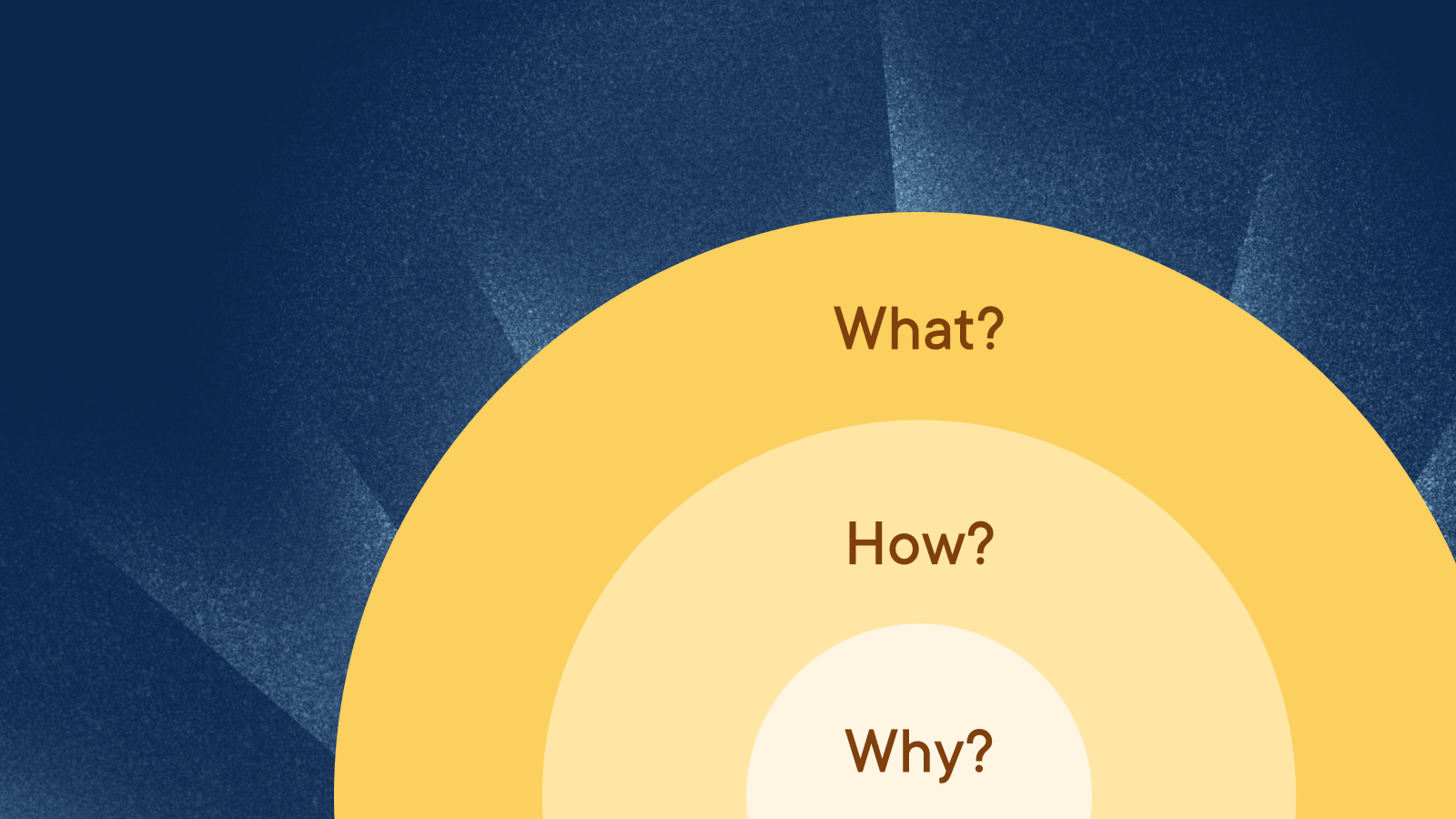Listen up if you're a leader - this is a game changer!
If you've ever been to Iceland, the idea of the Golden Circle might conjure up a rather different image to the golden circle we're about to discuss here. That 300km route across Iceland is full of waterfalls, geysers, hot springs, and volcanic craters.
Sure, you might come across geezers at work or be able to apply Waterfall methodologies. You might even get into hot water occasionally. But not if you follow Simon Sinek's golden circle theory.
What is the golden circle approach?
While we've already established that it's a long way from being a tourist in Iceland, Simon Sinek's golden circle model is an explanation of why some organisations are able to inspire, while others aren't. Based on Sinek's research, it's how the most awe-inspiring companies, those with winning business strategies, think, act, and communicate with clients / service users / customers if they start with the “why.”
Picture a concentric circle.
“What?” is in the outer circle and relates to every person in a business knowing exactly what they do, 100% of the time.
“How?” is in the middle circle, with only some people within an organisation knowing how they do it, and what sets their organisation apart from others.
“Why?” is the core of the golden circle - the core of a business as such - where very few people in that company know why they do what they do. The “why” isn't about making a profit - that's a result. The “why?” is all about identifying what's your purpose, your cause, your belief…essentially why does your organisation exist?
How to navigate the golden circle
It's human nature to start from the outside of the circle, with what you know, and work your way to the inside, which is the more challenging aspect - i.e. the “why.”
However, those leaders, the ones who inspire action rather than manipulating people into action, choose to reverse that, expounding first on the “why” to hook you in and keep you interested. That's because people don't buy what you do, they buy into why you do it.
This reversal of communicating your strengths works because it talks directly to the limbic system, the part of the brain involved in behavioural and emotional responses.
Let's look at a couple of real life examples to show how the golden circle theory works.
Example 1
We've all heard of Elon Musk and his company, Tesla, so named after Nikola Tesla, a Serbian-American inventor, engineer, and futurist renowned for contributing towards the design of the modern alternating current (AC) electricity supply system. Elon Musk is on a mission and certainly wants you to know about it…
Tesla's golden circle might look like this:
Why - Our mission is to speed up the global march of sustainable energy
How - Constantly trying to find new ways in which to make sustainable energy cheaper, more accessible, and more cost effective
What - We sell electric vehicles
The “why” here is crucial, as who doesn't want to champion an increase in sustainable energy for the good of the planet?
Example 2
Slightly older pioneers back in the 19th century, the Wright Brothers, Orville and Wilbur, are accredited as the inventors, builders, and flyers of the first ever motor-operated aeroplane that actually flew.
The Wright Brothers' golden circle might look like this:
Why - If we can figure out how to get this flying machine off the ground, then anything is possible
How - We'll work day and night, constantly testing and retesting new ways in which to fly, while learning from any mistakes
What - We're building powered flight
Another enticing “why” which has proven to be game changing.
Using the golden circle theory to your advantage
While the golden circle idea is primarily focused on businesses, it can be applied to individuals as well. Pinpointing your “why” is crucial to visualising your career goals and achieving career success. Many people know what and how they do what they do, but not why. And if you don't know why you do something, then no one else will have a clue either.
The key to it is actually putting it into practice.
Identifying your purpose is important because:
-
It helps you to secure early, and potentially loyal, adopters
-
It helps to differentiate yourself within a saturated market
-
It helps you to communicate with the decision-making parts of your customers' brains
The takeaway
Let's let the golden circle man himself, Simon Sinek, have the last word. He said, “If you hire people just because they can do a job, they'll work for your money. But if you hire people who believe what you believe, they'll work for you with blood, sweat, and tears.”
Keen to get going with your job applications? Identify your why and aim high! Our team of expert CV writers is here to help you to take your next step. Try out our free CV review as a first port of call. Improve your chances of securing that all-important interview with our guidance on what is, and isn't, working on your CV and get some recommendations for improvement.
Recommended reading:
-
Teamwork skills on your CV: How to show you're a team player
-
Personal development for career advancement: strategies for continuous growth
 Elizabeth Openshaw
Elizabeth Openshaw 